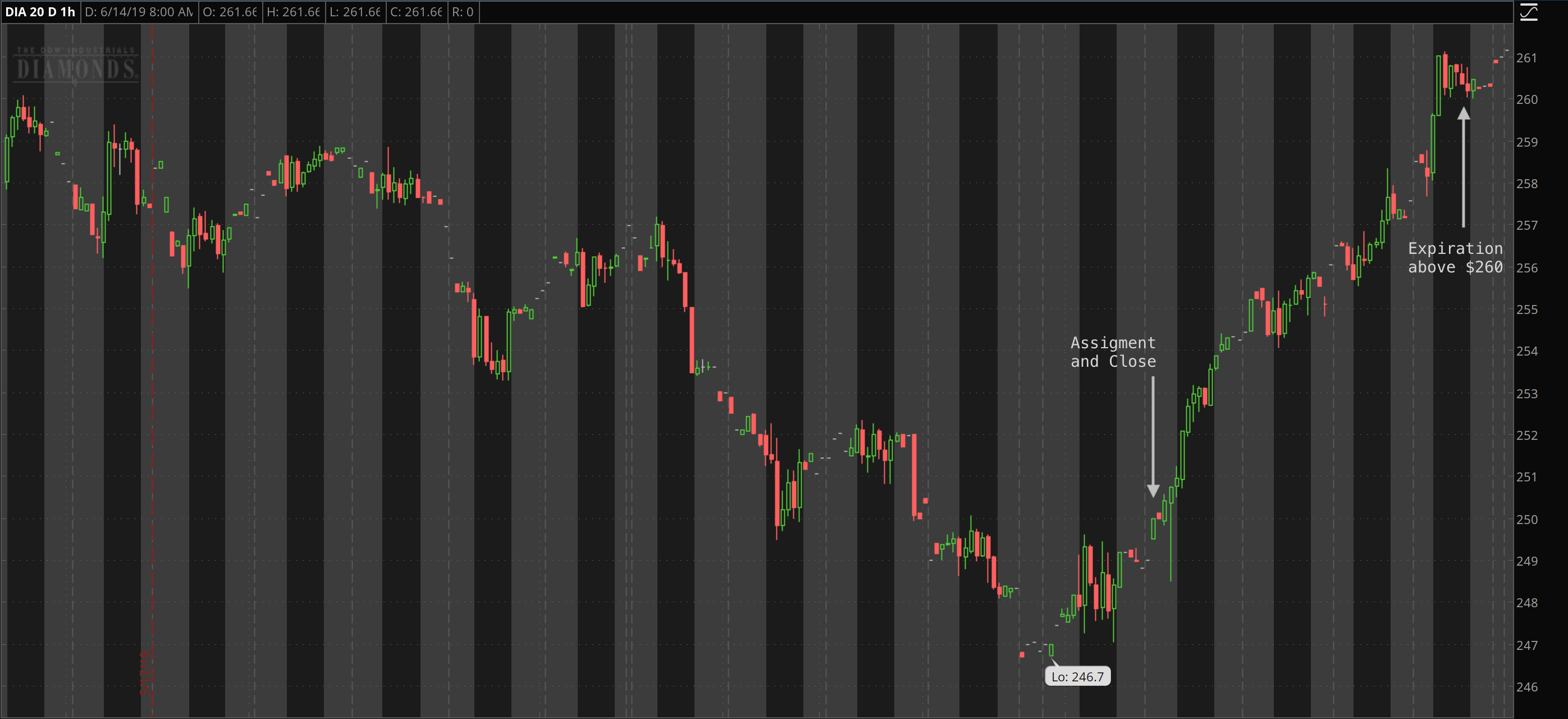Handling options assignment
June 14, 2019 • 2 min read
Options assignments are still new to me. I hadn’t really been assigned any of my options trades until this past year. The dip in December gave me a crash course. It seemed every other week my DIA and IWM weekly options were being assigned.
Generally speaking, I understand exercising options for an upcoming dividend. I somewhat understand assignment due to volatility in a stock or the market overall. But any other time seems arbitrary to me. As such it’s difficult to know how best to manage the options trade.
- Do I hold the underlying stock to maintain the trade?
- Do I sell the stock and re-create the trade with options?
- Do I close the trade?
Unfortunately there’s no single answer. There's just too many factors at play in the market. But I have learned a few things dealing with these assignments.
First, unless the assignment was due to a dividend, assignment often occurs at extremes. So for example, all of the assignments in December were at the market lows. Conversely, I had June options in BYND that were assigned this past weekend after their earnings pop. From the events of the last two days, it appears to be their top.
Admittedly this is all anecdotal. Nonetheless, it has occurred enough to give me pause when assigned options positions. This pause affords me time to analyze the trade more closely. Which brings me to my second point.
Second, ff you have the capital to hold the stock position (which you should), then you have the choice to maintaining the trade. Given the assignment occurred at a market extreme, the probability of mean reversion becomes greater.
Let’s review yet another options assignment in DIA last week. The original options trade was $260/$250 put credit spread in the June 7 weekly options. The week of expiration I was assigned the $260 put options.
The market had opened up that day. I had the capital to hold the position. But I closed the trade.
I got emotional. Given the downward movement of the previous weeks and the capital requirements, I didn't want to hold the underlying stock.
During the week to I proceeded to climb closing just above $260. Had I held the assigned stock or recreated the options position through the week into expiration the trade would have expired with a full profit.

Now woulda coulda shoulda. But again, there is a lesson to be learned.
This original options position was covered by the $250 puts. DIA opened around $250 the day of assignment. Had I assessed the risk-reward, the trade was already a full loser. Meaning there was no additional risk to hold the position. So, at the time of assignment, the reward in holding the position was greater than the risk.
The lesson to be learned here is: if you have the means to hold the underlying stock, and the trade still passes a simple risk-reward analysis, you should maintain the trade. Otherwise, close.
Find this interesting? Follow me on Twitter for even tips and trades.